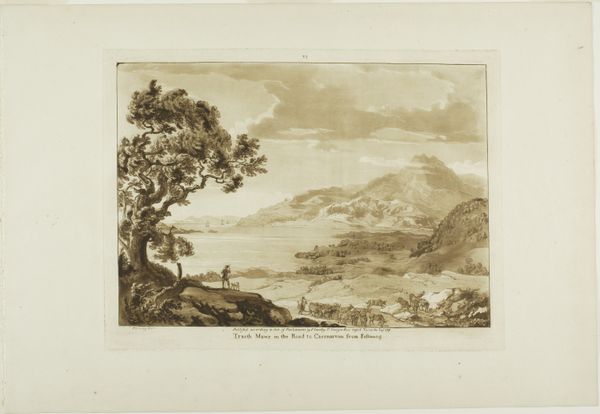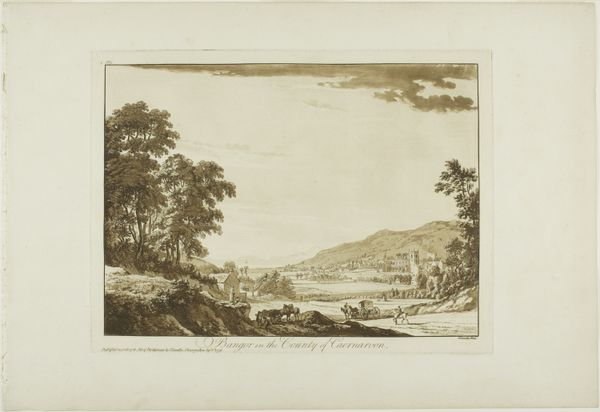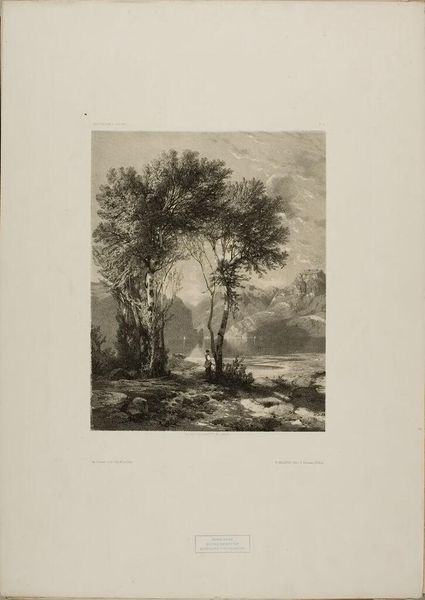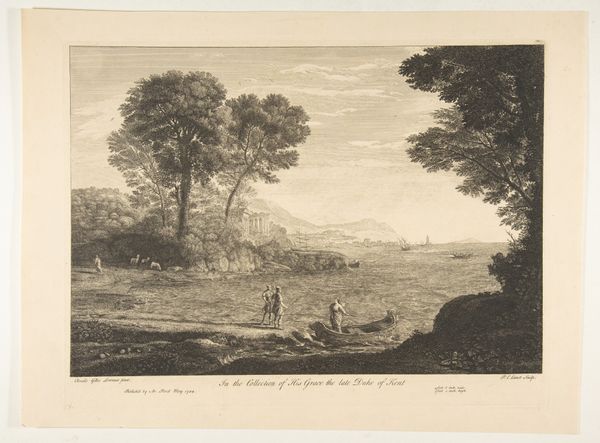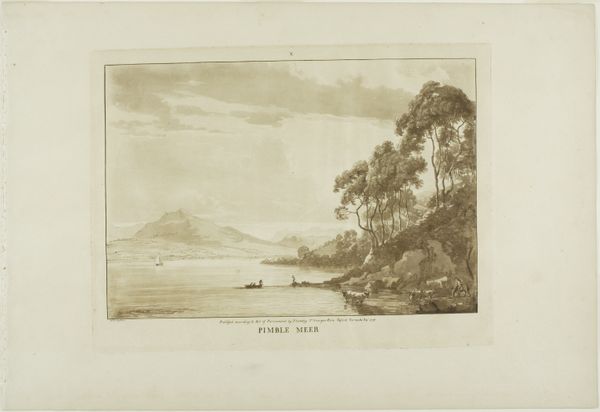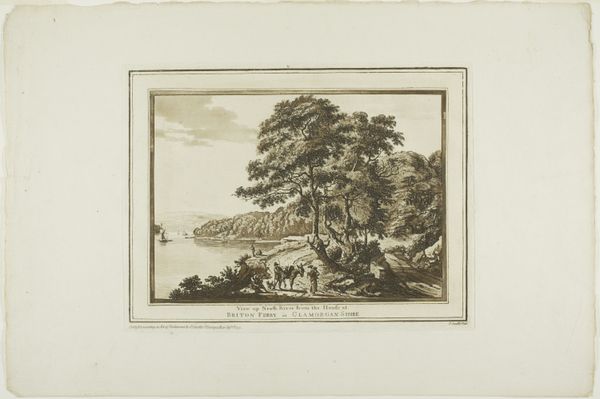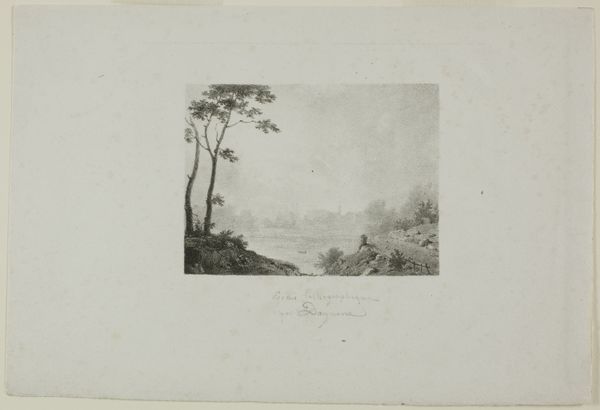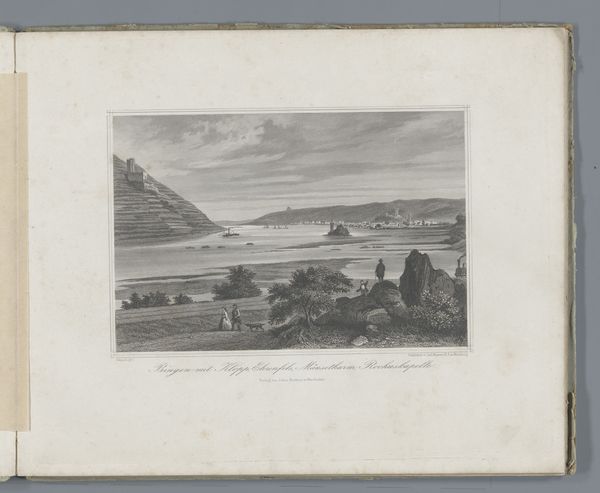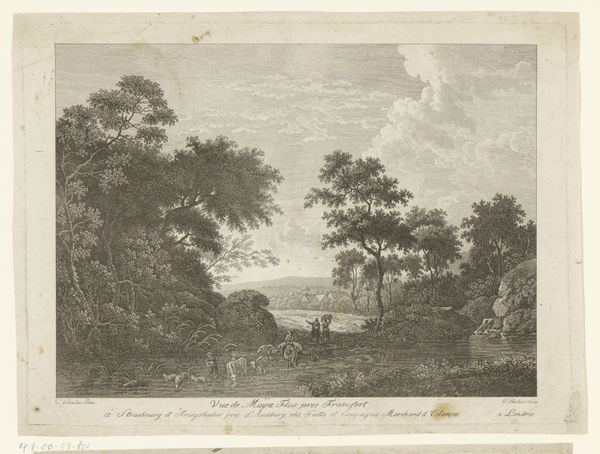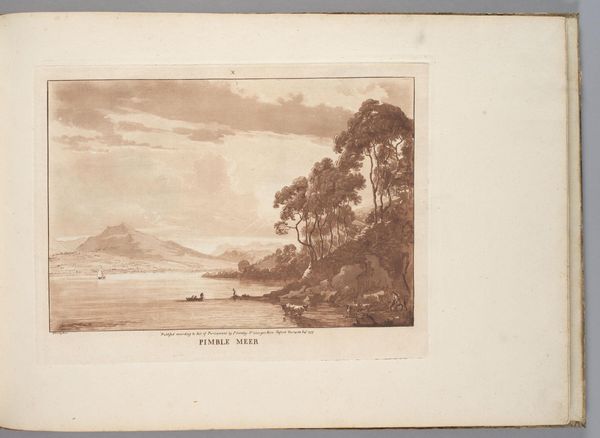
drawing, print, etching, paper
#
drawing
#
neoclacissism
# print
#
etching
#
landscape
#
paper
#
england
#
cityscape
#
watercolor
Dimensions: 239 × 315 mm (plate); 320 × 463 mm (sheet)
Copyright: Public Domain
Curator: This subtle and intriguing etching is called "Conway in the County of Caernarvon," created in 1776 by Paul Sandby. It lives here at the Art Institute of Chicago. What's your immediate reaction? Editor: Hauntingly serene, I’d say. A bit washed out, but with a certain understated power. The composition— the trees leading to the castle perched on the crag. Very evocative, almost ghostly. Curator: Ghostly, yes, the etching technique lends itself to that. Sandby, known as one of the fathers of English watercolor, captures a slice of the Welsh landscape at a time when Neoclassicism dominated. It’s part drawing, part print… the man was multifaceted. But beyond just topography, I feel a longing, don't you? Like staring at a dreamscape. Editor: Absolutely, but let’s consider the sociopolitical context. 1776… smack-dab in the Enlightenment, the rise of empirical observation, a burgeoning national consciousness within England fueled by its colonial endeavors and anxieties about the periphery – in this case, Wales, the "other" within Britain. Is Sandby just recording, or is there an element of asserting English dominion? Curator: Dominion maybe a strong word… but definitely possession, gazing over it… it reminds of those early photographic landscapes, there's a romanticization and perhaps an effort to contain, tame even. It’s interesting how those power structures, visual and political, intertwine. Editor: Power is never truly invisible, is it? Even the way we are positioned as the viewer, almost taking possession. Consider the small figures to the side, too, these witnesses, positioned away, not partaking directly in that castle or governance in view... are they mere adornments or signifiers of displacement, looking for connection? Curator: Maybe it is less idyllic and more of an archive… something I hadn't fully processed before! Thanks! The subtle tonal variations create so much room for layered readings, it seems. Editor: Always. It's through dialogues like this we see the complexities, question our own gaze and how artworks converse across time. I'll certainly be approaching old Paul a little differently in the future.
Comments
No comments
Be the first to comment and join the conversation on the ultimate creative platform.

